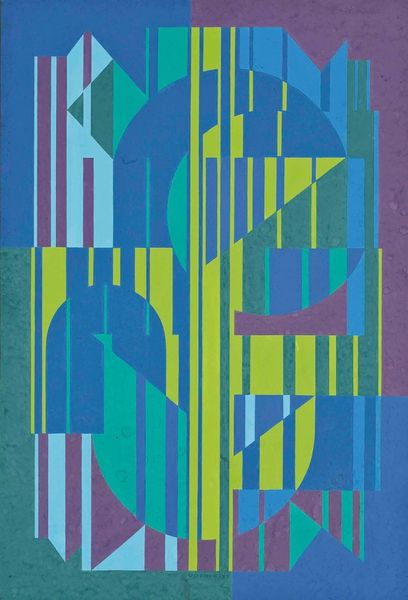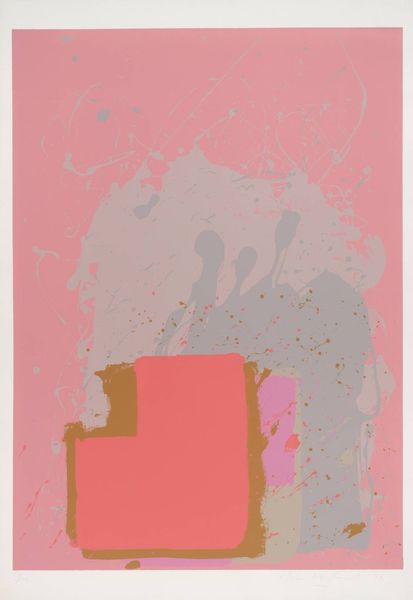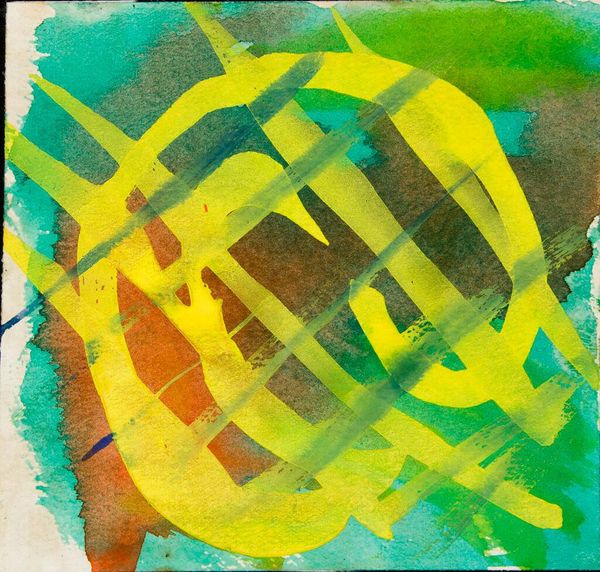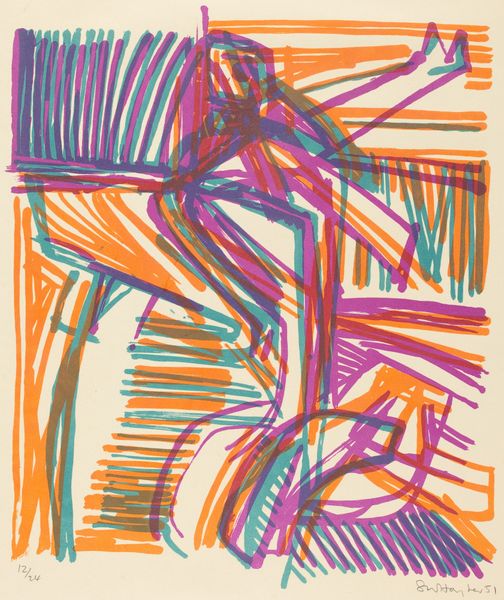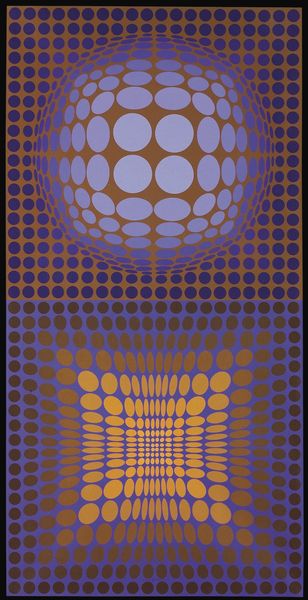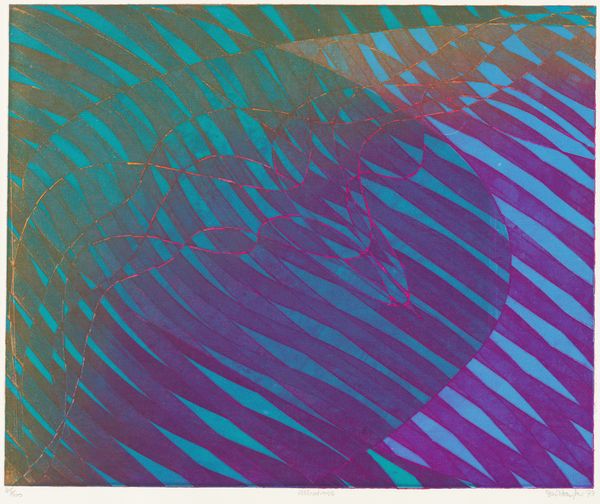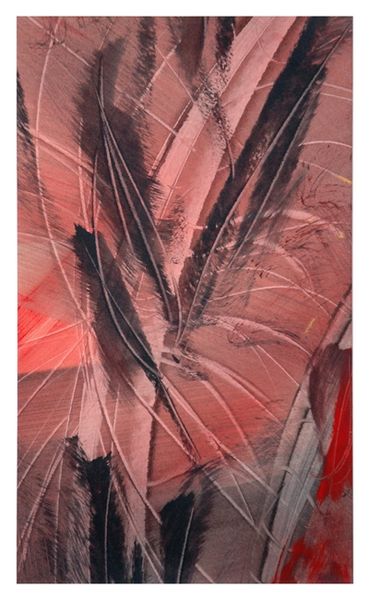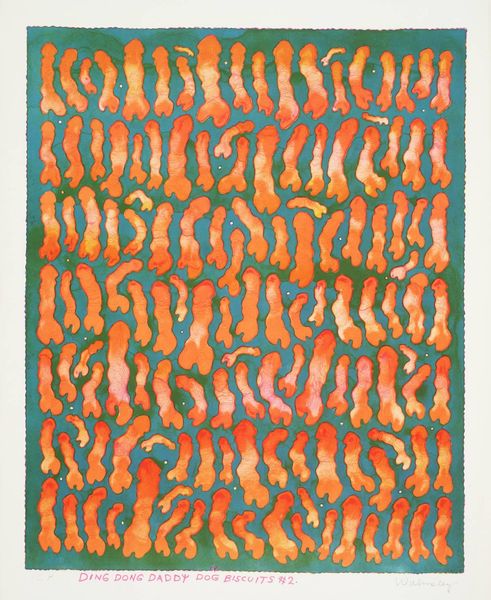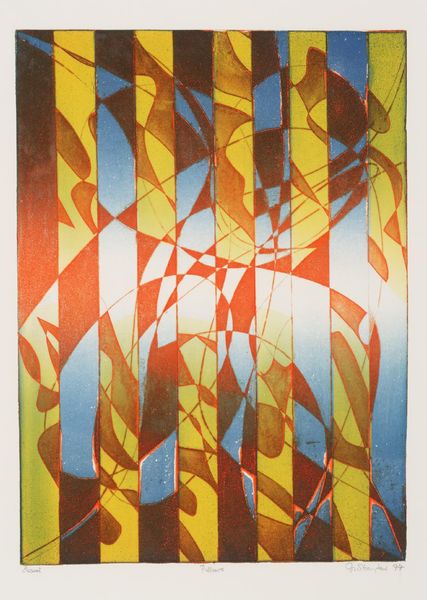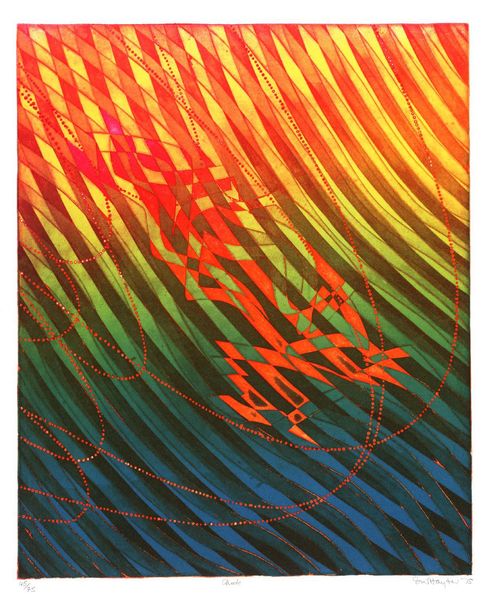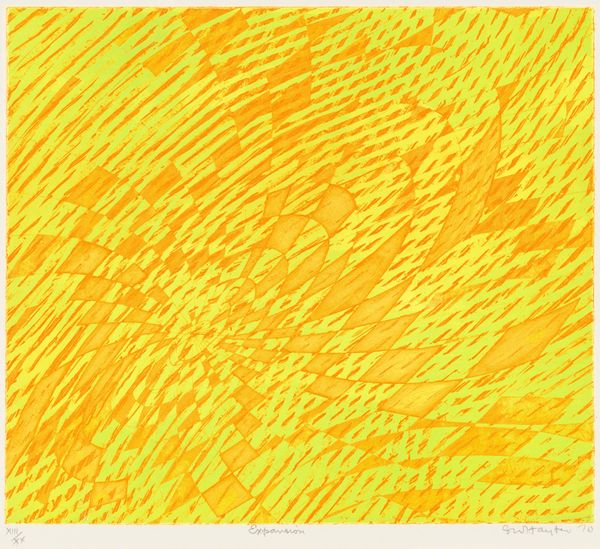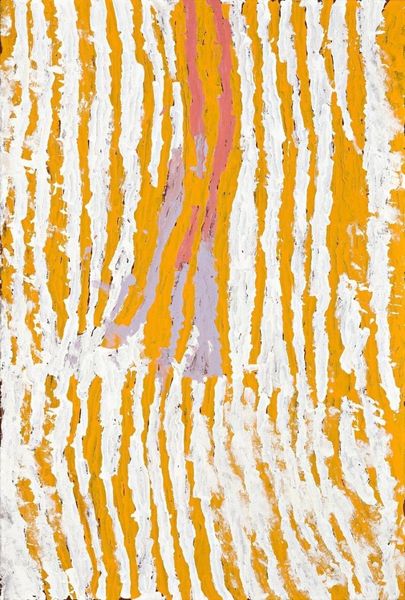
Dimensions: plate: 49.8 x 39.7 cm (19 5/8 x 15 5/8 in.) sheet: 76.2 x 57 cm (30 x 22 7/16 in.)
Copyright: National Gallery of Art: CC0 1.0
Curator: Before us hangs "Bouleau," an etching by Stanley William Hayter, completed in 1976. Editor: Well, that’s certainly… vibrant. My first impression is sunlight filtering through something, though I couldn't immediately say what. Curator: The title suggests a birch tree, "bouleau" being French for birch. Hayter masterfully uses line and color to suggest organic forms within a rigid structure. Notice how the vertical lines dominate, yet the sinuous curves overlaying them create a dynamic tension. Editor: Interesting that you mention tension. Birches often represent transformation and new beginnings. Does this tension mirror the push and pull between change and stability in our lives, do you think? The verticality could also signify growth. Curator: Perhaps. One can certainly interpret the colour palette psychologically. The cool turquoise above shifts dramatically to yellows and hot pinks, establishing contrasting zones, possibly even discordant ones. Yet the interplay of the line resolves this friction. Editor: Colour choices here might tap into deeply rooted emotions. The yellows, particularly, radiate warmth and optimism, offset by that almost aggressive pink. Could Hayter be exploring conflicting aspects of growth, joy mixed with uncertainty or even pain? Curator: Intriguing hypothesis. Let's not forget Hayter’s process. As a printmaker, he embraced chance and innovation, often layering colours and textures. Perhaps the interplay you sensed isn't pre-ordained so much as a record of intuitive, process-led decision-making. Editor: Even if arrived at intuitively, these choices resonate with cultural memory. This period also saw increased interest in ecological awareness; birch trees might represent a wider desire for connection with nature. This abstracted presentation hints at something familiar, like glimpsing sunlight in a forest, making it universally approachable. Curator: Well, viewing it solely through a symbolic prism risks bypassing the aesthetic impact of his line and form, or that particular orchestration of colour that activates the plane. Editor: And dissecting structure could mean losing its emotional core. Ultimately, it sparks something individual and personal, so it achieves communication, which is all that any artwork seeks to accomplish.
Comments
No comments
Be the first to comment and join the conversation on the ultimate creative platform.
